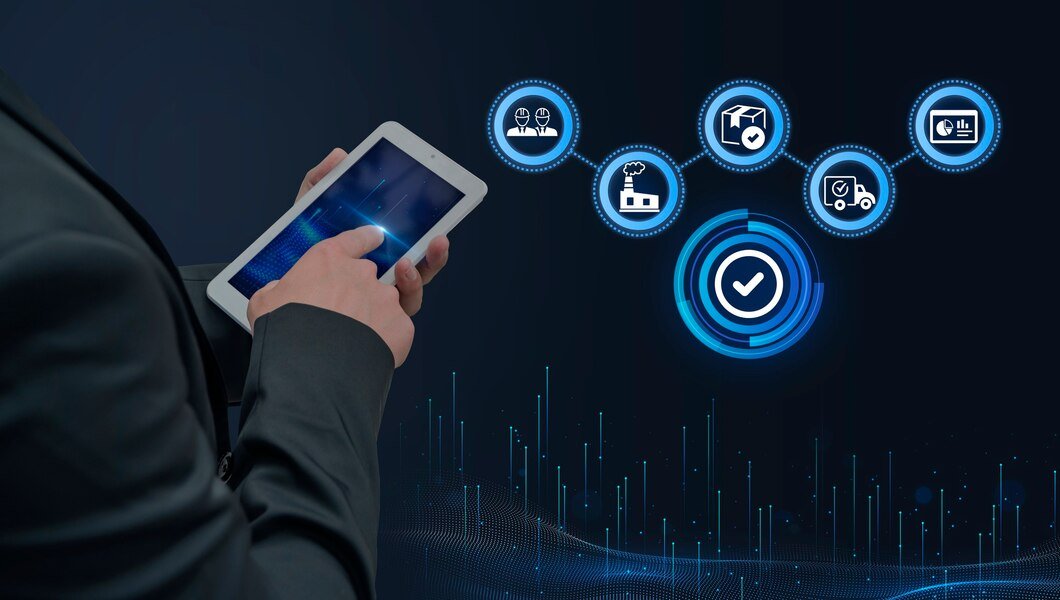Technology
Ensuring robust application security in Mobile applications

Mobile applications can therefore be considered to have integrated into people and business within the twenty-first century. Since some of these applications are used frequently any time the user challenges some more tasks, it is more important therefore that the application should have strong security. Mobile application security refers to all the measures and strategies, which are used to secure mobile applications against threats, challenges or even data loss.
To attain a further understanding of the subject of application security, this article analyzes the fundamental features of application security, including threat identification, secure coding practices, and risk mitigation strategies, providing insights into safeguarding applications against potential vulnerabilities.
1. Understanding application security
Application security therefore denotes the security practices and measures that have to be undertaken and implemented so as to secure an application over its usage life. It also encompasses the preservation, security, and accessibility of data that go through the application. As the field of software development progresses, so do the ways through which it is threatened. Hackers use various strategies to penetrate the applications with the aim of hacking into the systems, stealing information and damaging users and organizations. When it comes to application security, several factors need to be considered by developers, these factors include; the use of proper coding standards, testing frequently and embracing security frameworks among others. The objective is to develop applications that can be defended against a range of attack types while not having their performance compromised.
2. The importance of mobile application security
Specifically, mobile application security deals with issues arising from mobile platforms. As more people use smartphones or tablets, mobile applications are in the spotlight as a popular target for cyber threats. The threats inherent to applications are sometimes more prominent because of aspects like, the mobility of the device, the usage of third-party modules, and connectivity dependency. Lack of mobile application security means that many firms would suffer from data leakage, money loss, and a tarnished image. From writing through the above-discussed literature, it is evident that a considerable number of mobile applications are susceptible to malicious attacks. As a result, the security of mobile applications should be a priority in order to protect users’ information and increase their confidence in mobile services.
3. Some of the common threat risks to mobile applications include
There are several threats that directly endanger mobile application security and these are important for developers and organizations to consider and mitigate. Among the primary threats, is malware – malicious software that can penetrate mobile applications and lead to unauthorized access, data leakage, or harm to devices. The second major issue relates to data loss and leakage where information may be disclosed to unauthorized individuals due to negligence, inadequate storage media, or poor encryption procedures. Another significant risk is Insecure Application Programming Interfaces (APIs), important for mobile Apps to interface with servers and services, these are potential entry points for attackers if not properly secured. Moreover, mobile applications are subject to reverse engineering by attackers, studying and disassembling them to understand their functioning and search for weaknesses.
4. Recommendations for security in mobile applications
For these reasons, it is advisable for developers to follow best practices to minimize risks associated with security while developing mobile applications. One of them is security coding standards, essential for avoiding the emergence of vulnerabilities at the development stage. This is in the form of input data validation, avoiding input of sensitive data directly, and use of secure libraries. Furthermore, during the development phase developers of software and websites uniformly use security assessments such as penetration testing and vulnerability scanning since they are able to identify security weaknesses that need to be fixed before live testing. The other important component is data encryption, affirming that, the secure modes of storing and passing data also provide protection by keeping data away from the reach of the achievers with end-to-end encryption of the message meaning that even if the message was intercepted the data would still not be accessible.
5. Mobile application security and the use of security
Frameworks Mobile application security frameworks are critical as they offer guides, policies, and utilities to enable mobile application developers to develop secure applications. Applying known security guidelines, the developers can meet the non-functional requirements and avoid common security pitfalls. For instance, the OWASP Mobile Security Project provides a clear list of the most critical threats pertinent to mobile applications and outlines measures for addressing such risks. Thus, using such frameworks helps developers be more proactive in matters of security and decreases the level of probability of vulnerabilities in applications. However, despite the importance of developers in securing mobile applications, user awareness is also essential for overall mobile application security. Making users aware of the risks and safety measures can significantly decrease the likelihood of attacks. The users should only download the applications from trusted sources, ensuring they update the applications so that they can access the improved patches and features.
6. Mobile application security from current to future
Mobile application security also remains dynamic with technological advancement changing the shape of how applications will be protected in future, thus the need for developers and organizations to update themselves on the latest trends. New technology trends visible here are the use of artificial intelligence and machine learning for improving security. These technologies can identify patterns of user behaviour and alert security when any changes are detected. Furthermore, since many regulatory bodies across the world continue to address privacy issues, developers are likely to find themselves in a position where their applications have to conform to legal standards in how they address user data. Another main trend is the use of the Zero Trust model, according to which no user or device can be trusted in any way. This model demands regular validation of the users and devices present at any geographical location for enhancing security.
Thus, it can be concluded that application security, especially mobile application security, is crucial in the present world where digital connections are vital. However, with the increased usage of apps on mobile devices, security issues have become more crucial than before. Due to this, by identifying the common threats, following the security measures, and integrating the information from security frameworks, developers can build reliable software to ensure user data’s safety and keep people’s trust. Furthermore, the increased consciousness and knowledge among users are crucial for the prevention and reduction of security threats. The security of new technologies will always be a topic of concern for developers and organizations as they continue to be introduced into the market. In the long run, a holistic approach towards Mobile application security will help create a safer environment for both consumers and companies.
Also Read: Hopping in an Uber?
-

 Celebrity11 months ago
Celebrity11 months agoWho Is Jennifer Rauchet?: All You Need To Know About Pete Hegseth’s Wife
-

 Celebrity1 year ago
Celebrity1 year agoWho Is Klarissa Munz: The Untold Story of Freddie Highmore’s Wife
-

 Celebrity1 year ago
Celebrity1 year agoWho Is Mallory Plotnik?: The Untold Story of Phil Wickham’s Wife
-

 Celebrity1 year ago
Celebrity1 year agoMeet Christina Erika Carandini Lee?: All You Need To Know Christopher Lee’s Daughter
















